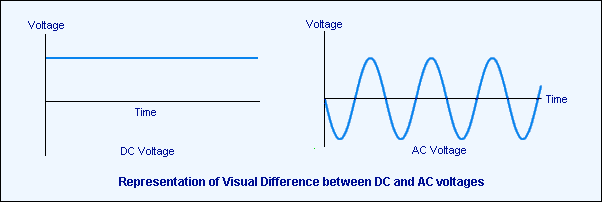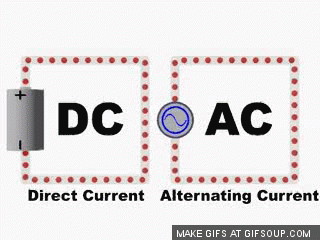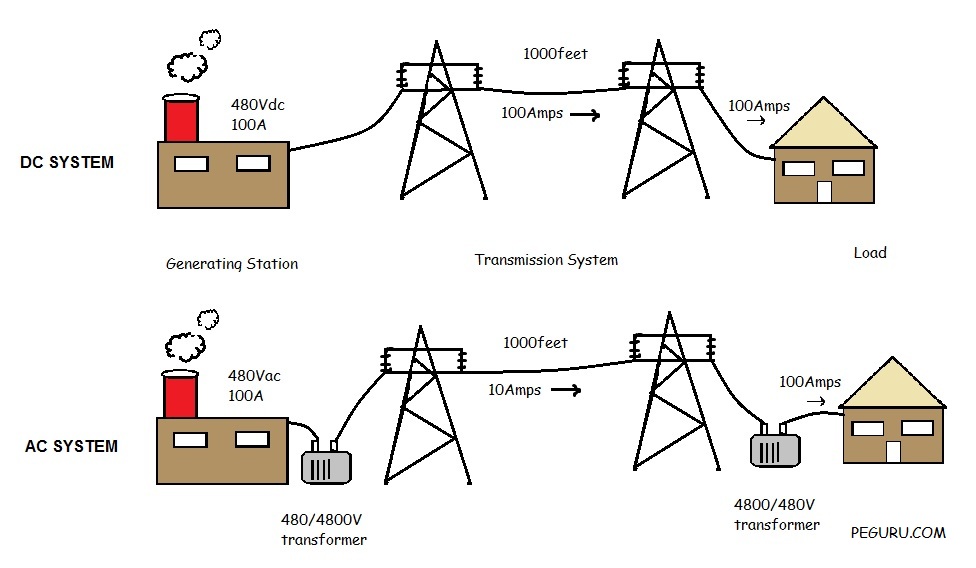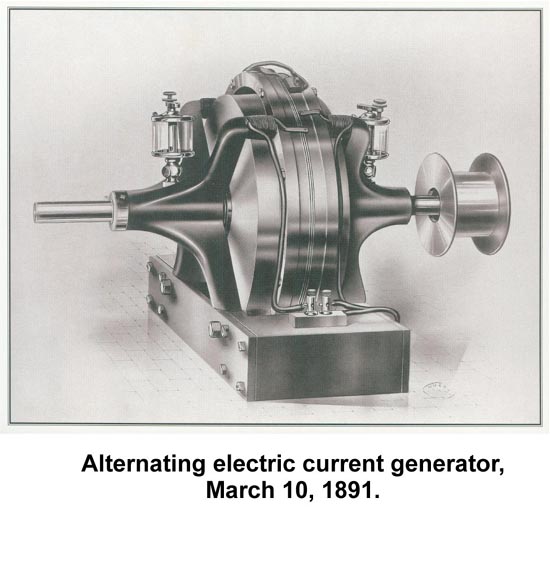AC vs DC
Claimed by Keenan Witsken
The Main Idea
Direct Current, or DC, is the name given to a steady constant current in a circuit that consists of a battery and a type of resistor. DC has a steady flow of electrons through a circuit and is used to power items such as a laptop, iPod, flashlight, radio, and almost any other electronic device. Basically, items that have batteries in them use DC power. Alternating Current, or AC, uses sinusoidally alternating current that flickers at extremely high speeds. This current moves back and forth throughout the object being powered, such as a lamp or a refrigerator.
How It Works
Basically, a Direct Current (DC) power source consists of a battery and a resistor. This circuit is unidirectional, which means that the current can only travel on one direction. An Alternating Current (AC) is a bit more complicated. Rather than only going in one direction, AC current travels back and forth in a system in a sinusoidal pattern, meaning that between every wavelength, there is a time when the current is stopped. AC usually travels at about 60 Hz which means that objects like the lamps in our office are actually flickering on and off at such a fast pace that we don't even notice the periods when the lamp flickers off. Usually the way that such an AC circuit works is that there is a magnet that spins close to the circuit so that when the positive end of the magnet is facing upwards and the negative end is facing downwards, the electrons are flowing upwards throughout the circuit. Likewise, when the positive end of the magnet is facing downwards and the negative end is upwards, the electrons flow downwards. When this magnet spins and alternates whether the positive end is facing up or down, the electrons switch off going up or down in the circuit. This creates the sinusoidal wave that I mentioned above. The magnet spins so quickly (about 3600 rpm) that it is extremely difficult to tell that the light is flickering. Sometimes, if you wave your hand in front of a fluorescent light bulb you can see the flickering.
Advantages and Disadvantages
Direct Current (DC)
Direct Current power is more efficient when transferring power to smaller loads, such as a laptop or a cellphone. A battery is more effective and also doesn't have skips in the power supply that an AC has since its voltage is sinusoidal. Also, using AC requires a transformer when transferring power of large distances. Also a DC does not introduce reactance in the line which transfers to higher power transfer in the line. This leads to lower cost.
Alternating Current (AC)
Alternating Current power is used in almost all home and office outlets. This is because it is more efficient when transferring power over large distances. Since P=IV, alternating current allows the supplier to greatly increase the voltage and lower the current so that there is no loss in energy through heat. If the current was very high, there would be a large loss of energy through overheating. Also, using DC only allows for buildings to be powered within a one mile radius which is ineffective when trying to power a whole town.
Connectedness
- How is this topic connected to something that you are interested in?
I find this topic very interesting because I have studied batteries in the past but also have a large fascination with a lot of the work that Thomas Edison invented. Thomas Edison was one of the innovative founders of General Electric and my father worked for General Electric for over 20 years. I would like to work for GE because of the innovative ideas and the learning programs that it includes in its co-op program.
- How is it connected to your major?
All of this is extrememly connected to my major because on the DC/Thomas Edison side of the spectrum, I aspire to work for General Electric. Being a mechanical engineer, General Electric offers one of the most prestigious mechanical engineering co-ops and provides one of the best learning programs for people studying mechanical engineering. Secondly, on the AC/Nikola Tesla side of things, I am fascinated with cars. I have had the opportunity to study batteries in the past and am amazed by the way in which the progression of technology is very closely related to the advancement of batteries. Being a mechanical engineer, studying the Tesla car and its motor is intriguing. Rather than using gasoline, the Tesla motor is run by an AC energy source. As explained above, this is because it is more practical since a DC energy source causes too much lost power through heat transfer.
- Is there an interesting industrial application?
People do not understand how important this topic plays in their everyday lives. Houses and office building all over the world use AC power sources through outlets to charge their mobile devices, laptops, and more. Batteries play a huge role in the advancement of technology and most devices that use batteries likely use the DC energy source. Other objects such as lamps and refrigerators use and Alternating Current.
History
Thomas Edison was the first to come up with DC in the way in which he tried to supply power to towns all over the US and Europe using DC energy sources. Nikola Tesla also wanted to supply energy to the world but through the use of AC rather than DC. Thomas Edison took Nikola Tesla under his wing in the late 1800s and both of these great minds brainstormed great ways to power America. When Thomas Edison started his plan to power towns with DC, Nikola Tesla argued that AC current was a better path to take. After an argument took place, Nikola was fired and Edison continued his plan to provide energy using DC power. Although AC is used to power houses all over the world today, during the late 1800s, it was a huge battle between AC and DC power to decide which energy source should take over. Thomas Edison even created advertisements and spread rumors about how AC currents were far more dangerous and showed this through electrocuting animals using AC. Once it was found that it is much easier to transfer AC long distances, AC became the common household energy source. This is because DC can only be used to power homes and buildings within one mile of the energy plant.
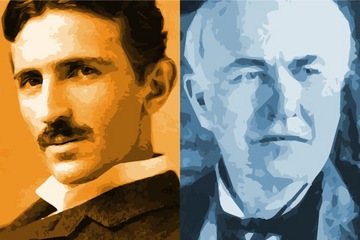 Nikola Tesla Thomas Edison
Nikola Tesla Thomas Edison
References
AC vs DC Image: http://blog.gogreensolar.com/2015/02/ac-vs-dc-breakers.html
Thomas Edison-Nikola Tesla Image: http://www.livescience.com/46739-tesla-vs-edison-comparison.html
Tesla Motor Image: http://www.teslasociety.com/hall_of_fame.htm
Industrial Usage Image: http://peguru.com/2011/03/ac-dc-power/
AC vs DC GIF: http://www.physicsbook.gatech.edu/File:Ac-vs-dc-o.gif
